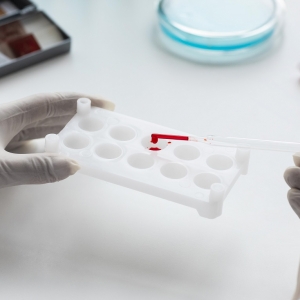In the world of medical research, the study of human biofluids and Human FFPE (Formalin-Fixed Paraffin-Embedded) tissue samples play a crucial role in unraveling the mysteries of various diseases and medical conditions. Researchers and scientists in the United States have been at the forefront of utilizing these invaluable resources to advance our understanding of the human body and develop innovative medical solutions. In this comprehensive guide, we will delve into the significance of human biofluids and FFPE tissue samples in research, their collection, storage, and how they are contributing to groundbreaking discoveries.

Understanding the Basics
What are Human Biofluids?
Human biofluids are bodily fluids that are essential for the proper functioning of the human body. They include blood, urine, saliva, cerebrospinal fluid, and more. These fluids contain a treasure trove of information about an individual's health, providing valuable insights into their physiological and pathological conditions.
The Role of Human FFPE Tissue Samples
Human FFPE tissue samples are a crucial part of medical research and pathology. These samples are created by preserving tissue specimens in formalin and embedding them in paraffin wax. This preservation method ensures that the tissue's cellular and molecular structures are retained, making it an invaluable resource for various studies, especially in cancer research.
The Significance of Human Biofluids in Research
Human biofluids have become indispensable in the field of medical research. Here are some key areas where they have made a significant impact:
1.Disease Diagnosis
Blood and urine samples are often used for diagnosing a wide range of diseases, from diabetes to cancer. The presence of specific biomarkers in these biofluids can provide early warning signs and aid in early intervention.
2. Drug Development
Pharmaceutical companies rely on biofluid analysis to understand the effects of drugs on the human body. This information is crucial in the development of new medications and therapies.
3. Monitoring Treatment Efficacy
Researchers use biofluids to monitor how patients respond to various treatments. This helps in making necessary adjustments to treatment plans for better outcomes.
4.Genetic Studies
Biofluids contain DNA and RNA, making them valuable for genetic research. Scientists can identify genetic mutations and markers associated with hereditary diseases and conditions.
The Role of FFPE Tissue Samples in Research
FFPE tissue samples are equally essential in the world of medical research, with a specific focus on pathology and genetics. Here's how they are contributing to scientific advancements:
1. Cancer Research
FFPE samples are a vital resource in cancer research. They allow scientists to examine the molecular and cellular changes in tumor tissues, aiding in the development of targeted therapies and personalized treatment plans.
2. Disease Mechanisms
These samples provide insights into the cellular and molecular mechanisms of various diseases, helping researchers understand the progression of diseases like Alzheimer's, Parkinson's, and heart disease.
3. Historical Research
FFPE tissue samples have historical value as well. They enable scientists to study past medical cases and diseases, contributing to our understanding of the evolution of medical science.
Collecting and Storing Human Biofluids and FFPE Tissue Samples
Proper collection and storage of biofluids and FFPE tissue samples are crucial to maintaining their integrity for research purposes. Here are some best practices:
Collection
- Biofluids should be collected using sterile techniques to prevent contamination.
- FFPE tissue samples require precise preservation techniques, including fixation in formalin and embedding in paraffin wax.
Storage
- Biofluids should be stored at the appropriate temperature to prevent degradation.
- FFPE tissue blocks should be kept in a controlled environment to maintain their structural integrity.
Unique Challenges in the USA
The United States, as a hub for medical research, faces specific challenges and opportunities in the field of human biofluids and Human FFPE tissue samples.
Ethical Considerations
Ethical guidelines and regulations surrounding the collection and use of human biofluids for research and tissue samples are stringent in the USA. Researchers must navigate these regulations carefully to ensure compliance.
Research Collaboration
The USA offers a conducive environment for collaborative research in this field, with numerous institutions, biobanks, and research centers working together to advance medical science.
Funding and Resources
American researchers benefit from substantial funding and access to cutting-edge resources, enhancing their ability to conduct extensive studies.
Conclusion
Human biofluids and Human FFPE tissue samples are the lifeblood of medical research in the United States. These invaluable resources have paved the way for groundbreaking discoveries and have significantly contributed to our understanding of diseases, genetics, and treatment options. As researchers continue to push the boundaries of what's possible, the study of biofluids and Human tissue samples will remain a cornerstone of medical progress in the USA. By adhering to strict collection and storage protocols, respecting ethical considerations, and fostering research collaboration, we can look forward to even more remarkable breakthroughs in the future.




